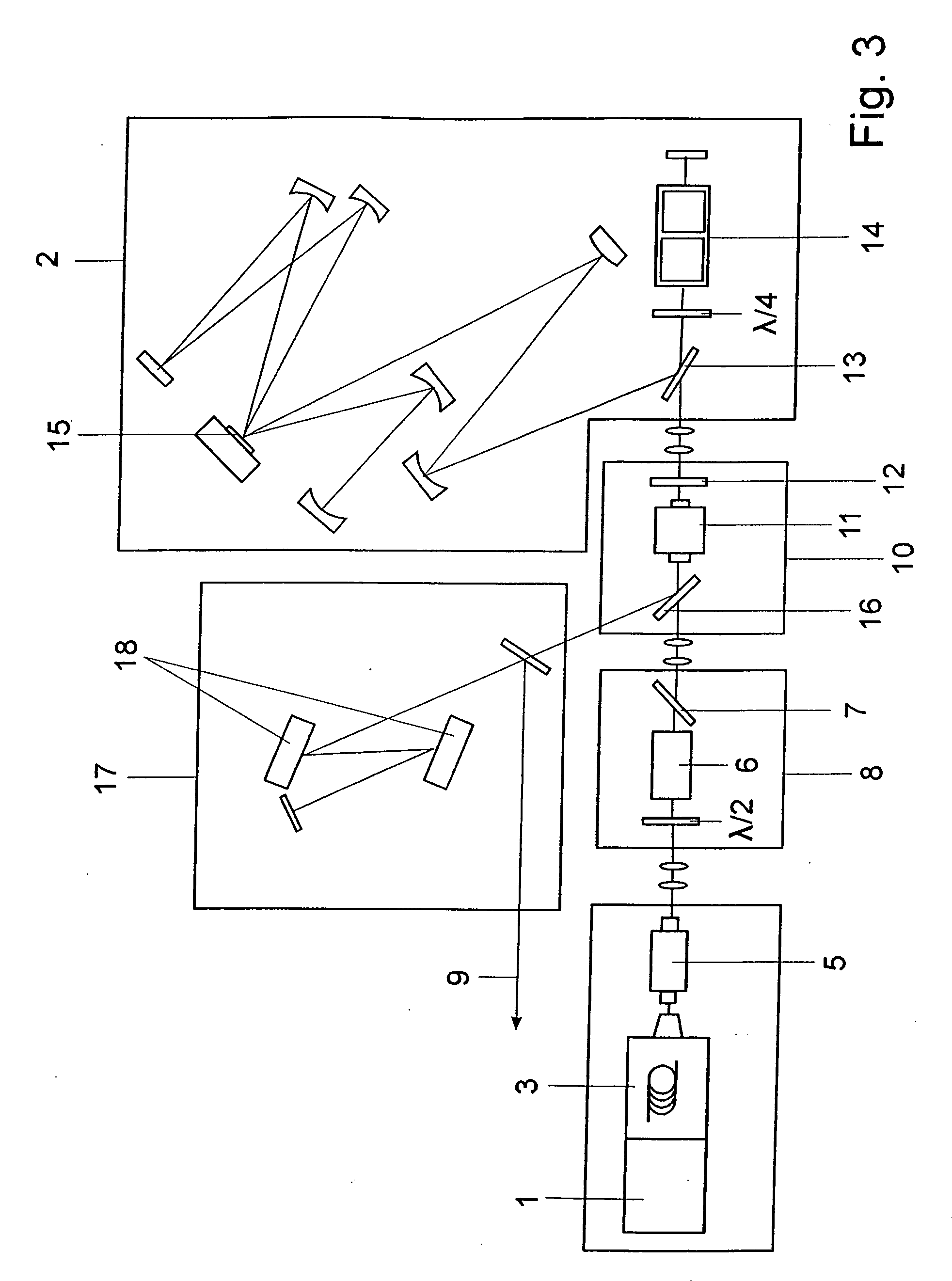Fiber laser arrangement with regenerative pulse amplification
a fiber laser and regenerative amplifier technology, applied in the direction of lasers, laser details, electrical equipment, etc., can solve the problems of destroying optical elements, affecting the performance of lasers, so as to reduce the effect of reducing the complexity of the apparatus and achieving the highest possible energy
- Summary
- Abstract
- Description
- Claims
- Application Information
AI Technical Summary
Benefits of technology
Problems solved by technology
Method used
Image
Examples
Embodiment Construction
[0033]The fiber oscillator shown in FIG. 1 is a passive mode-locked femtosecond fiber oscillator 1 designed for parabolic pulse generation. This oscillator is intended to generate bandwidth-limited femtosecond pulses with typical pulse durations of 250 fs, pulse energies of several nanojoules, and a repetition rate of 50 MHz. The femtosecond fiber oscillator 1 with a central wavelength which lies at the point of maximum amplification of a regenerative amplifier 2 (1025 nm for Yb:KYW) consists of a ring resonator with conventional active (Yb) and passive fibers. The dispersion compensation in the resonator of the femtosecond fiber oscillator 1 is realized by means of a reflection grating. Femtosecond pulses with a pulse duration of Tin are generated in the femtosecond fiber oscillator 1 on the basis of the principle of parabolic pulse formation. Some of these are then coupled out by way of a fiber network and amplified in a fiber amplifier 3 with an amplifying fiber 4, which consists...
PUM
 Login to View More
Login to View More Abstract
Description
Claims
Application Information
 Login to View More
Login to View More - R&D
- Intellectual Property
- Life Sciences
- Materials
- Tech Scout
- Unparalleled Data Quality
- Higher Quality Content
- 60% Fewer Hallucinations
Browse by: Latest US Patents, China's latest patents, Technical Efficacy Thesaurus, Application Domain, Technology Topic, Popular Technical Reports.
© 2025 PatSnap. All rights reserved.Legal|Privacy policy|Modern Slavery Act Transparency Statement|Sitemap|About US| Contact US: help@patsnap.com



